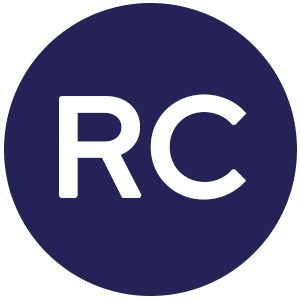Hospitals are complex organizations with a wide variety of assets that need to be managed efficiently in order to optimize revenue, keep costs down, and ensure quality care.
Unfortunately, many hospitals struggle with mobile asset management, and that’s why we recently launched ProPAR, which leverages artificial intelligence and machine learning to automate periodic automated replenishment (PAR) processes in hospitals.
But what exactly is PAR? And how does it affect a hospital’s bottom line? This post will answer those questions and illustrate how the enterprise-wide application of Cognosos’ ProPAR can help hospitals derive maximum return on investment (ROI) from their real-time location system (RTLS).
What is PAR?
As far as golf analogies go, PAR is a pretty good one for this subject. In both contexts, you’re shooting for a specific number. In golf, par is the score that a player is expected to make on a given hole.
In hospital asset management, PAR refers to the minimum (or maximum) limits that you set for certain kinds of equipment in your clean and soiled storage rooms. Addressing PAR effectively means that your nurses, doctors, and other staff can always find the clean equipment they want, whenever they need it. It also means your hospital’s equipment cleaning and deployment processes are running smoothly.
Using a room-level-accurate RTLS, a hospital administrator can automate PAR alerts for storage rooms throughout the facility. When the quantity of a certain equipment class approaches its minimum PAR level in a clean storage room, hospital staff get a ping on their phone or mobile device instructing them what and how many items are needed, and where the items need to be delivered. A similar but opposite alert can be set for soiled storage rooms. When the quantity of a certain equipment class approaches its maximum PAR level in a soiled storage room, hospital staff get an alert instructing them on what and how many items need to be removed and taken for cleaning, and where they should be picked up. PAR automations can save hospital equipment staff significant amounts of time and aggravation.
How does PAR affect your hospital’s bottom line?
The longitudinal PAR data provided by an RTLS can provide important insights into a hospital’s equipment utilization. All hospitals want to maintain a balance between having too much and too little mobile equipment. Having too much equipment sitting unused (underutilization) means your hospital has too much money tied up in its clean storage closets. But having those closets consistently alerting that they’re under PAR (overutilization) suggests your mobile equipment workflow needs attention, and you may need to invest in more equipment. Understanding and acting upon accurate utilization data is the best way your hospital can derive a high ROI from your RTLS.
For example, let’s say that your hospital tagged 1,000 infusion pumps during your RTLS installation. Three months later, your data show that all the clean storage rooms in your hospital have remained comfortably over their PAR level for infusion pumps and only need to be replenished every seven days. What does that mean? Your infusion pumps are underutilized; you likely have more equipment than you need. There are several actions you can take based on that data, including selling your surplus equipment to recoup costs. This just one of many examples of how PAR levels can inform data-driven purchasing decisions.
If PAR is so important, why do you need to invest in a full, enterprise wide RTLS?
Monitoring individual storage rooms’ PAR levels will show only one part of your hospital’s equipment utilization picture. The strength of Cognosos’ ProPAR technology is that it’s embedded in a sophisticated system that can map your mobile fleet’s entire lifecycle—from in use with a patient, to soiled storage, to central cleaning, to clean storage, and back to patient use. That holistic knowledge is essential to understanding what your facility needs to do to optimize its equipment fleet.
Imagine your RTLS data shows consistent overutilization of bladder scanners in the west wing, and your nursing team is asking you to purchase more. If your decision is based on the nursing team’s complaint and the PAR data from clean and soiled storage rooms alone, you might go ahead and make that purchase. But what if the real problem lies in your understaffed central cleaning department, which can’t return clean bladder scanners fast enough to floor-level storage rooms? An RTLS that simply monitors the PAR levels of clean and soiled storage rooms can’t identify that bottleneck—a lack of perspective that could prove costly.
On the other hand: If you had an enterprise-wide RTLS like Cognosos, you could diagnose the underlying source of the bladder scanner shortage and explore less expensive solutions, such as reallocating staff to your central cleaning department so equipment moves more quickly through the workflow.
To learn more about how an investment in Cognosos and ProPAR can provide this kind of value for your hospital, please check out our related post, “Bring Consistency – And Efficiency – To Your Mobile Equipment Management With ProPAR”.



